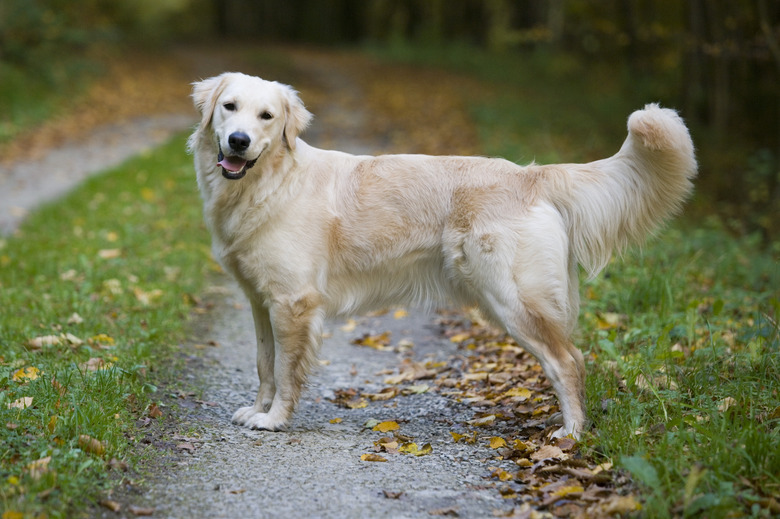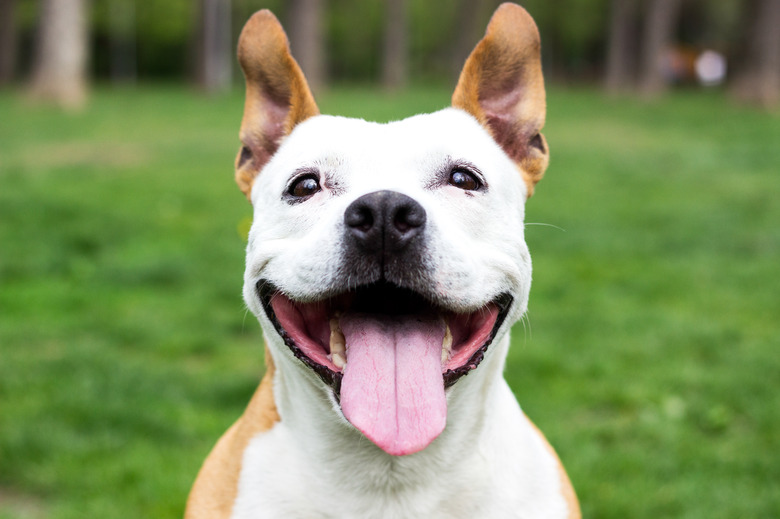Anatomy Of A Dog's Throat
Your dog's throat anatomy is quite similar to yours. In fact, you're probably already familiar with the trachea, larynx, epiglottis, and esophagus. Your dog shares them, and they function in much the same way as yours do. From eating to talking, your dog's throat shares a lot in common with those of his human counterparts. Your dog's throat anatomy begins with the pharynx, the passage lined with membranes between the nose and throat, and continues all the way to his stomach. This vital part of your dog's anatomy is responsible for getting food into his tummy and air into his lungs while also providing a way for him to speak through barking.
Dog esophagus and trachea
Dog esophagus and trachea
The trachea, or windpipe, is a tube consisting of flexible, C-shaped cartilage rings. A dorsal ligament connects with the cartilage rings, forming a tube. Air passes through the tube en route to the left and right bronchi and then on to the bronchioles, which are smaller airways in the lungs.
The canine esophagus sits alongside the trachea, beginning as part of the pharynx. It's a tube that conveys food from its initial point to the stomach with virtually no absorption of whatever she eats. Think of the tube like a delivery system that gets your pup's favorite food and treats from her mouth to her tummy. Sphincters on either end of the esophagus aid in getting food to its destination without harm to other parts of the throat anatomy.
The top sphincter muscle keeps food heading into the esophagus and not the larynx, while the bottom sphincter muscle is the entrance to the stomach. Both muscles are closed whenever the dog isn't swallowing to keep air from entering the digestive tract.
Collapsed trachea in dogs
Collapsed trachea in dogs
Over time, the rings that make up the trachea in dogs can weaken and flatten, leading to tracheal collapse. Tracheal collapse can cause breathing problems and occurs most commonly in small breeds, brachycephalic breeds, older dogs, and overweight dogs.
In a dog with tracheal collapse, you might notice a honking cough, noisy breathing, and that your dog tires out quickly when exercising. Tracheal collapse is a serious medical problem that your veterinarian will diagnose through a combination of X-rays, echocardiograms, endoscopy, and bloodwork. She might also perform a special type of moving X-ray called a fluoroscopy as your dog breathes. Treatment usually includes weight loss for your dog, anxiety medication, medication to help with inflammation and spasms, and surgery.
Canine larynx and barking
Canine larynx and barking
Your dog's voice box, or larynx, sits atop the trachea. It's the source of all his barking, growling, whining, and other vocalizations. It serves along with the epiglottis as tracheal protection. The larynx consists of cartilage, muscles, and ligaments. It's kept in place by the hyoid apparatus, which also supports your dog's tongue and pharynx. Your dog's larynx is bordered on the sides and front by the thyroid gland, shaped like a shield.
As in humans, inflammation of the larynx is known as laryngitis. If you notice that your dog's bark sounds different or softer, that she's coughing a lot, or that she has trouble swallowing, then your dog may have laryngitis. While excessive barking can cause laryngitis, it can also result from distemper or bronchitis. Visit your veterinarian to determine the cause and for proper treatment of this condition, which could become serious if left untreated.
Dog epiglottis anatomy
Dog epiglottis anatomy
Your dog's epiglottis is small but mighty. This little flap of cartilage sits on top of his larynx, where it acts as a gatekeeper. It prevents food from entering the larynx and the windpipe when the dog swallows. Shaped like a leaf, the epiglottis moves over the entrance to the larynx once swallowing commences. The epiglottis can also direct air toward the esophagus when your dog breathes much as it does with humans.
References
- Merck Manual Veterinary Manual: Introduction to Lung and Airway Disorders of Dogs
- Washington State University College of Veterinary Medicine: Digestive System of the Dog
- American College of Veterinary Surgeons: Tracheal Collapse
- Colorado State University: The Esophagus
- Merck Manual Veterinary Manual: Laryngitis in Dogs
- EasyAnatomy: Anatomy of the Canine Respiratory System


